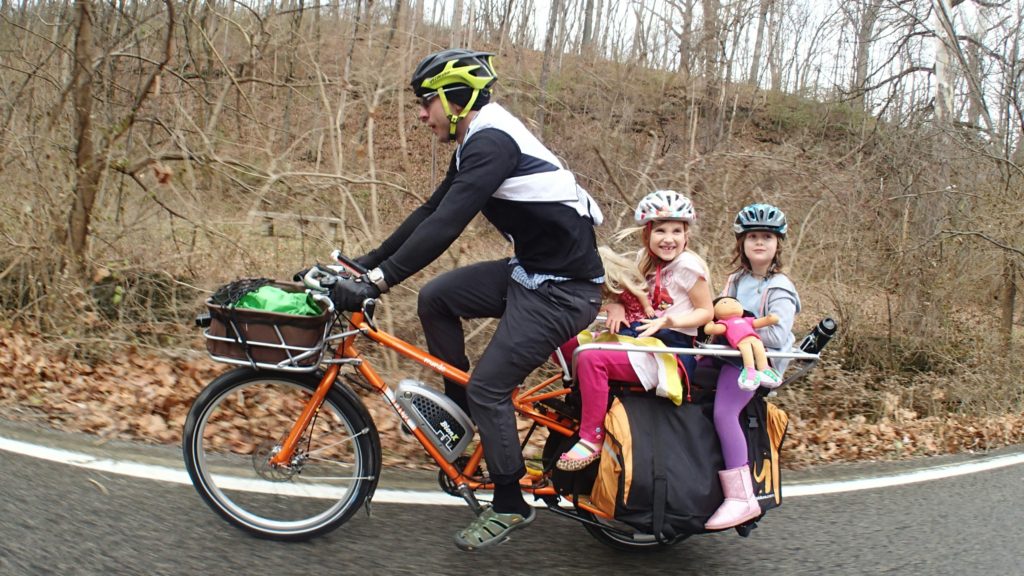To make sure everyone enjoys their time outdoors, it’s important to know a few tips for safe family biking. After all, safety should always be a top priority – no matter where you go with your kids! But this is especially true when planning a family bike trip, as there are lots of things to take into consideration. Ensuring your bikes are in good condition, checking each rider’s gear, and discussing safety rules before hitting the road can make a big difference.
From helmet checks to route planning, here are five of the best tips for safe family biking that can help protect everyone and make your ride more enjoyable. Whether you’re biking around the neighborhood or heading out on a longer trail, these tips for safe family biking will help you ride with confidence and peace of mind.
5 Tips for Safe Family Biking

1. Check your Cycling Equipment Beforehand
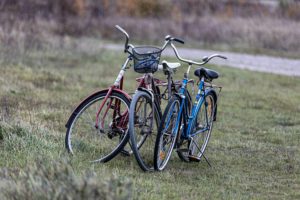
A quick pre-ride inspection can save you a lot of time and trouble on the trails. Plus, it’s one of the easiest ways to avoid accidents or mechanical issues that could arise. Therefore, it’s worth taking a few minutes before your trip to ensure everyone’s bike is in optimal riding condition.
This includes:
- Checking tire pressure and firmness
- Testing front and rear breaks
- Removing dirt and build-up from chains
- Ensuring lights, reflectors, and bells are working
- Doing a helmet fit check (make sure it fits snugly)
- Adjusting the seat and handlebars to the fitted height
2. Plan Your Route Ahead of Time
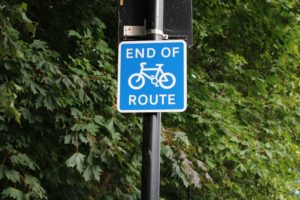
The trail you choose for your family trip plays a huge role in your cycling experience. Every child has their own strengths and abilities that should be considered when picking where to go. If you have multiple riders, you’ll want to base your decision on the stamina of the youngest/least experienced rider.
Here are a few factors to keep in mind:
- Trail distance: How far can your kids comfortably ride? Make sure to factor in the return trip if you’re not doing a looped trail.
- Terrain: Smooth, flat trails are generally easier for inexperienced riders, while uneven gravel paths are better for more advanced kids.
- Facilities: Look for trails near rest areas, water fountains, or restrooms.
- Traffic: If you can, choose a bike path that is separated from cars or heavily pedestrianized areas. The busier the trail, the more difficult it tends to be for young riders.
3. Have a Front and/or Rear Rider
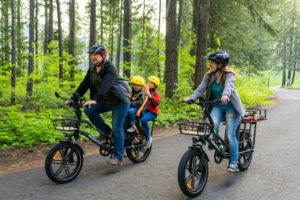
As the adult, you should be keeping an eye on your children as much as you can during the ride. This ensures that nobody gets lost or left behind while you’re out and about, but that can be difficult on a bike ride considering that everyone goes at a different speed. For that reason, it’s best for you to take the rear position, as you can keep an eye on where your kids are going. And, if there are two adults in your group, place one at the front to act as a guide. The other one can follow from behind and keep watch.
4. Practice Safety Communication
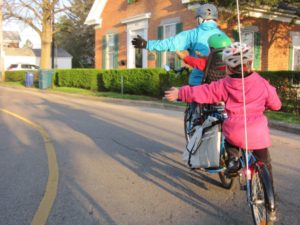
As with any family outing, it’s also a good idea to teach your kids about how to communicate while biking. This includes verbal cues as well as the necessary hand signals for turning and stopping. Even if your trail isn’t busy, it’s important for them to learn how to ride in case other cyclers or walkers are nearby. In addition, you should also go over expectations with your children. Review the route (and any expected stops) so kids have a better idea of what they can anticipate during the ride.
It’s also smart to talk about emergency situations. This includes what to do if the group gets separated or how to handle unexpected injuries or accidents. We recommend carrying a mini first aid kit and a bike multi-tool as an added safety precaution. This is by far one of the most important tips for safe family biking.
5. Stay Fueled and Hydrated
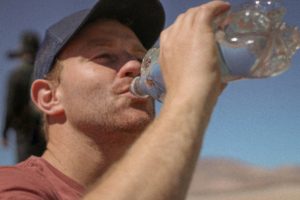
It doesn’t matter if you’re going on a short ride or a full-day excursion; staying hydrated is key to preventing fatigue and having a fun family bike ride. Each rider should have their own water bottle, as well as nutritious snacks like trail mix and fruit. Try to avoid bringing sugary drinks like energy drinks and juice or unhealthy snacks like chips and candy. Among the most forgotten tips for safe family biking, bringing snacks can help curb low blood sugar in the kids (and you!)
You might also consider organizing a picnic, where your family can stop mid-way for a break. Not only will this ensure everyone is fueled for the ride back, but it also gives you something to look forward to!
Safe Family Biking Tips: Recommend Trail Types by Age
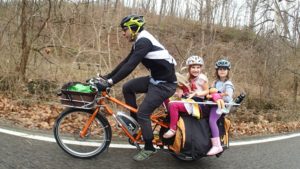
As we mentioned earlier, one of the most important aspects of planning a family bike ride is choosing an age-appropriate trail. Every child has different physical abilities and confidence levels, and the right trail can make or break your experience together. While every child develops at their own pace, here’s a list of suggested trail types based on your kid’s age range. One of the more major tips for safe family biking is choosing trails that are appropriate for the kiddos based on their age.
- 2 to 4 years: Flat, paved trails in a park or dedicated bike loop. Make sure trails are wide and uncrowded. Younger kids (and you, as the parent) may feel more comfortable with a child’s bike seat.
- 5 to 7 years: Paved trails or loops. Trails with gentle elevation and some bike traffic are generally okay.
- 8 to 10 years: Gravel trails and unpaved paths in addition to paved trails or loops. Feel free to choose something with bridges or hills for more variation.
- 11 to 13 years: Beginner-friendly to moderate biking trails with hills and switchbacks. Can be longer trips lasting ~2 hours.
- 14+ years: Moderate to advanced trails or mountain biking trails with obstacles and elevation changes. Make sure you have an off-roading bike to tackle the rough terrain! Longer-distance adventures are generally suitable for this age as well.
Why Safety Matters on Family Bike Rides

Cycling is a great family-friendly activity, especially if everyone is into outdoor adventure! To ensure your kiddos get the most out of this experience, keep these tips for safe family biking in mind. That includes going over safety information, packing enough water, and choosing a kid-friendly trail. Because after all, the safer the trip, the more fun everyone will be able to have! These tips for safe family biking help prevent accidents, reduce stress, and keep the focus on enjoying time together. Whether you’re new to biking with kids or a seasoned pro, following a few key tips for safe family biking can make all the difference.
